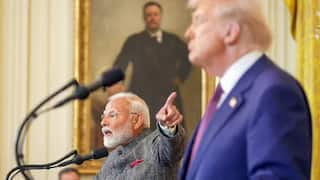Chandrayaan, Apollo, Artemis, Luna – Successful Moon Missions Launched Till Date
Science For Everyone: As the country rejoices at the historic soft landing of Chandrayaan-3 on the Moon's south pole, we discuss this week all the successful lunar missions launched till date.

Moon Missions: Welcome back to "Science For Everyone", ABP Live's weekly science column. Last week, we discussed the reasons why Chandrayaan-2 failed, and what changes the Indian Space Research Organisation (ISRO) had made to ensure the success of Chandrayaan-3. As the country rejoices at the historic soft landing of Chandrayaan-3 on the Moon's south pole, we discuss this week all the successful lunar missions launched till date.
On August 23, 2023, India became the first country in the world to softly land a spacecraft on the lunar south pole. Chandrayaan-3 is India's third lunar exploration mission, and is expected to operate till the first week of September 2023.
Check all the stories appearing in ABP Live's weekly science column here.
Successful Moon Missions Launched Till Date
A total of 146 Moon missions have been launched till date. Of these, over 75 missions have been successful. India's Chandrayaan series started in 2008, and NASA's Apollo program began in 1968. Luna 2 is the first successful Moon mission.
The following is the list of successful and operational Moon missions which achieved firsts and made groundbreaking discoveries.
Luna 2
Launched on September 12, 1959, by the Soviet Union, Luna 2 was the second spacecraft in the Luna series, and the first spacecraft to land on the Moon. Its landing site was near the lunar surface east of Mare Serenitatis near the Aristides, Archimedes, and Autolycus craters, according to NASA. With this, the Soviet Union became the first country to land a spacecraft on the Moon.
The design of Luna 2 was similar to that of Luna 1. It was a spherical spacecraft. Luna 2 found no evidence of radiation belts on the Moon, and confirmed that the Moon has no magnetic field.
ALSO READ | After Chandrayaan-3 Softly Lands On Moon, ISRO Sets Eyes On The Aditya-L1 Solar Mission. All About It
Luna 3
Luna 3 was the second spacecraft to reach the Moon, and the first to return images of the far side of the Moon. It was launched on October 4, 1959. The images revealed mountainous terrain on the far side of the Moon, and two dark regions.
Ranger 7
Launched on July 28, 1964, by NASA, Ranger 7 was a huge milestone for the United States because it was the country's first successful lunar mission after 13 consecutive failures.
The spacecraft captured 4,316 images of the Moon, according to NASA. However, it crashed into the Moon on the northern edge of the Sea of Clouds, or Mare Nubium, a lunar mare located in the Moon's near side. With the help of the images captured by Ranger 7, NASA identified safe Moon landing sites for Apollo astronauts.
ALSO READ | Soft Landing To Trans-Lunar Orbit: Chandrayaan-3 Jargons Explained
Ranger 8
NASA launched Ranger 8 on February 17, 1965. The spacecraft impacted the Moon's surface on February 20, 1965. Ranger 8 captured over 7,000 high-resolution images of the lunar surface before its impact on the Sea of Tranquility, a lunar region that was thoroughly studied by Apollo mission planners.
Ranger 9
Ranger 9 was the last in the series of NASA's Ranger spacecraft launched in the 1960s. Its aim was to take images as it descended towards the lunar surface for impact. The spacecraft was different from its predecessors in the fact that it pointed its cameras in the direction it was heading. It was launched on March 21, 1965.
ALSO READ | Why Chandrayaan-3 Chose The Moon's South Pole As Its Landing Site
Zond 3
Zond 3 was launched on July 18, 1965, from Tyuratam, now Baikonur Cosmodrome. It captured pictures of the Moon's far side. The spacecraft's science objects were to study the ultraviolet and infrared spectra of the lunar surface, magnetic properties of near-Earth and interplanetary space, cosmic rays, low-frequency galactic radiation, solar wind, and micrometeorites. It captured images of the remaining 30 per cent of the lunar far side.
Luna 9
Launched on January 31, 1966, Luna 9 was the first spacecraft to achieve a soft landing on the Moon, and the first to transmit photographic data from the Moon's surface to Earth. The Soviet Union's Luna 9 proved that the surface of the Moon could support the weight of a lander, and that an object would not sink into the lunar surface.
MUST READ | Water Scarcity, Sea Level Rise, Intensified Floods, Droughts, Heat Waves -- Climate Threats For India
Luna 10
Luna 10 was launched on March 31, 1966, and the first spacecraft to enter lunar orbit. It was also the first human-made object to orbit a celestial body beyond Earth.
Luna 10's objectives included achieving the first lunar orbit, obtaining experience in orbital operations, and studying the lunar environment.
MUST READ | EXCLUSIVE: Women Make Up 16 Per Cent Of Indian Scientists, This Is Quite Low: Experts On Status Of Women Scientists Since Independence
Surveyor 1
Surveyor 1 was the first in a series of seven robotic spacecraft sent to the Moon by NASA to prepare for the Apollo missions, and the US's first spacecraft to make a soft landing on the Moon. It was launched on May 30, 1966. It sent over 11,000 images to Earth from the Moon's surface.
Luna 12
Luna 12 was launched on October 22, 1966, by the Soviet Union, to study lunar gamma and X-ray emissions to determine the Moon's chemical composition, the concentration of meteorite streams near the Moon, and anomalies in the gravitational field around the Moon, among others.
NASA's Lunar Orbiter 2 was launched on November 6, 1966, to capture images of smooth areas of the lunar surface to identify safe landing sites for the Apollo missions.
MUST READ | EXCLUSIVE: 'Brain Drain', Indigenous Equipment Development — Challenges For India In Science, And What Experts Suggest To Overcome Them
Lunar Orbiter 2
NASA launched Lunar Orbiter 2 on November 6, 1966. It photographed smooth areas of the lunar surface to help select safe landing sites for the Apollo missions.
MUST READ | EXCLUSIVE On ABP: India Will Be A Major Global Player In Science By Next Decade, A Lot Will Be Driven By AI: Experts Predict Science Advancements
Luna 13
The Soviet Union's Luna 13 was the third spacecraft to successfully soft-land on the Moon, after Luna 9 and Surveyor 1. It was launched on December 21, 1966.
Lunar Orbiter 3
NASA launched the Lunar Orbiter 3 spacecraft on February 5, 1967. It was the final mission to capture images of potential Apollo landing sites.
Surveyor 3
Surveyor 3 was launched by NASA on April 17, 1967, and conducted experiments which helped scientists conclude that the lunar surface was solid enough to hold the weight of an Apollo lunar module.
Lunar Orbiter 4 and Lunar Orbiter 5
NASA launched Lunar Orbiter 4 on May 4, 1967, and Lunar Orbiter 5 on August 1, 1967. The aim of these missions was to map the surface of the Moon. These missions photographed 99 per cent of the Moon.
MUST READ | There Could Be New Particles, We Need To Have An All-Encompassing Theory: CERN Scientist Archana Sharma
Explorer 35
NASA launched Explorer 35 on July 19, 1967, to study the Moon from lunar orbit for six years. The spacecraft discovered that the Moon created a cavity in the solar wind stream, that solar wind particles impact directly onto the lunar surface, and that the Moon has no magnetosphere.
Surveyor 5
Surveyor 5 was launched by NASA on September 8, 1967. It was the first spacecraft to conduct a soil analysis on the Moon, or any celestial body other than Earth.
Surveyor 6
Surveyor 6 was launched by NASA on November 7, 1967, and landed on the Moon on November 10, 1967. It was launched for a second time on November 17, 1967, making it the first spacecraft to be launched from the surface of the Moon.
Surveyor 7
Launched on January 7, 1968, by NASA, Surveyor 6 was the only spacecraft of the surveyor series to land in the lunar highland region.
EXCLUSIVE On ABP Live | Space-Based Internet, International Collaborations — New Opportunities For India In Space Sector, And What Experts Say
Luna 14
Luna 14, launched on April 7, 1968, by the Soviet Union, aimed to test communications systems between a spacecraft at the Moon and ground stations on Earth, in order to prepare for a crewed Soviet mission.
Zond 5
Launched on September 14, 1968, Zond 5 was the first spacecraft to be successfully recovered, and the first to carry Earth life to travel to the Moon, and orbit it. The spacecraft carried tortoises, mealworms, and bacteria, among other living beings.
Apollo 8
Apollo 8, launched on December 21, 1968, was the first crewed mission to the Moon, and made three NASA astronauts the first humans to see the far side of the Moon. These astronauts were Frank Borman, James Lovell Jr, and William Anders.

Apollo 10
NASA launched Apollo 10 on May 18, 1969. The crewed Moon mission carried astronauts Thomas P Stafford, John W Young, and Eugene A Cernan.
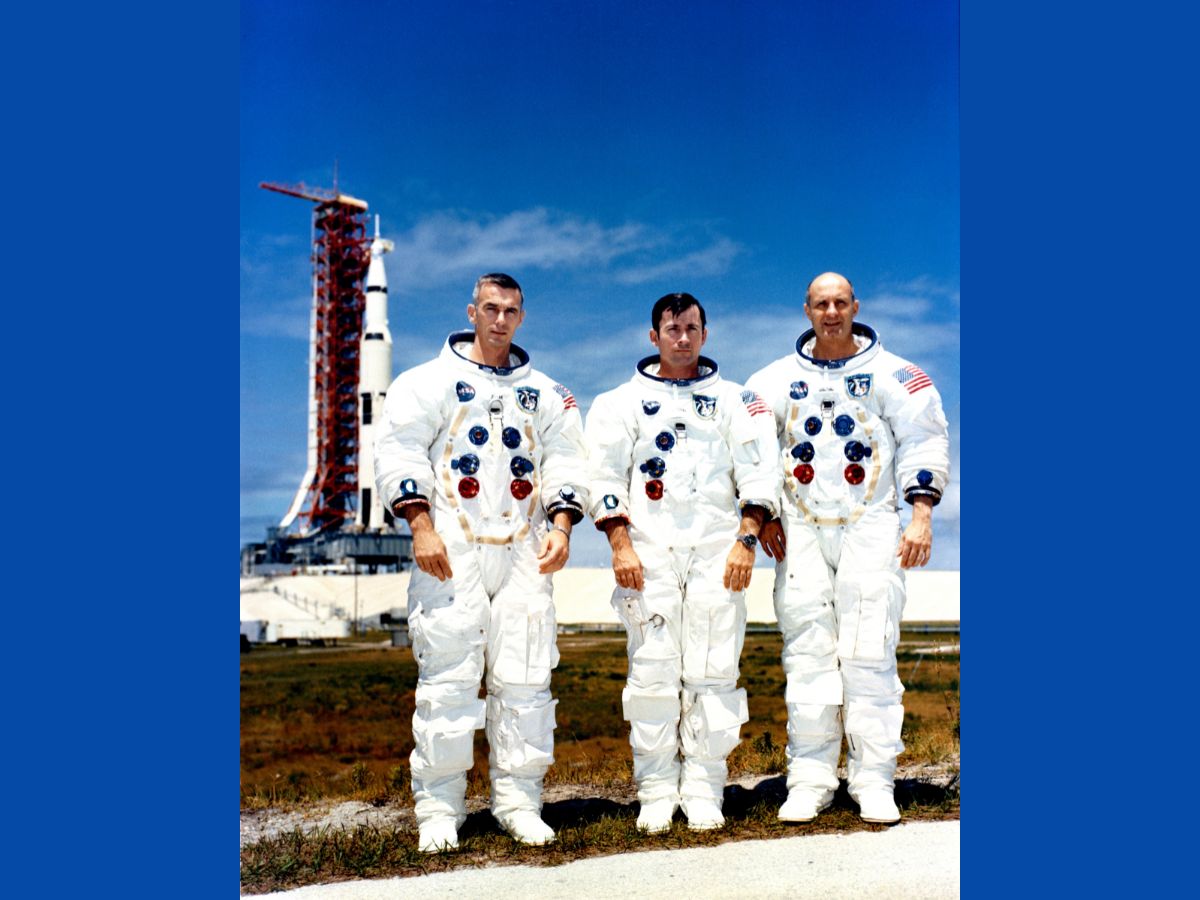
MUST READ | EXCLUSIVE: India Has A Very Long Tradition Of Particle Physics, Says CERN Physicist Archana Sharma
Apollo 11
The Apollo 11 mission was the first crewed landing on the Moon. Three astronauts were launched towards the Moon atop a Saturn V rocket. Armstrong, Aldrin and Collins deployed instruments on the Moon, captured photographs, and collected samples.
In an address at Rice University on September 12, 1962, then United States President John F Kennedy had informed the public about his goal to land a man on the Moon before 1970. "We choose to go to the Moon," he had said. In less than a decade, the Apollo 11 mission was launched, sending the first humans to the Moon.
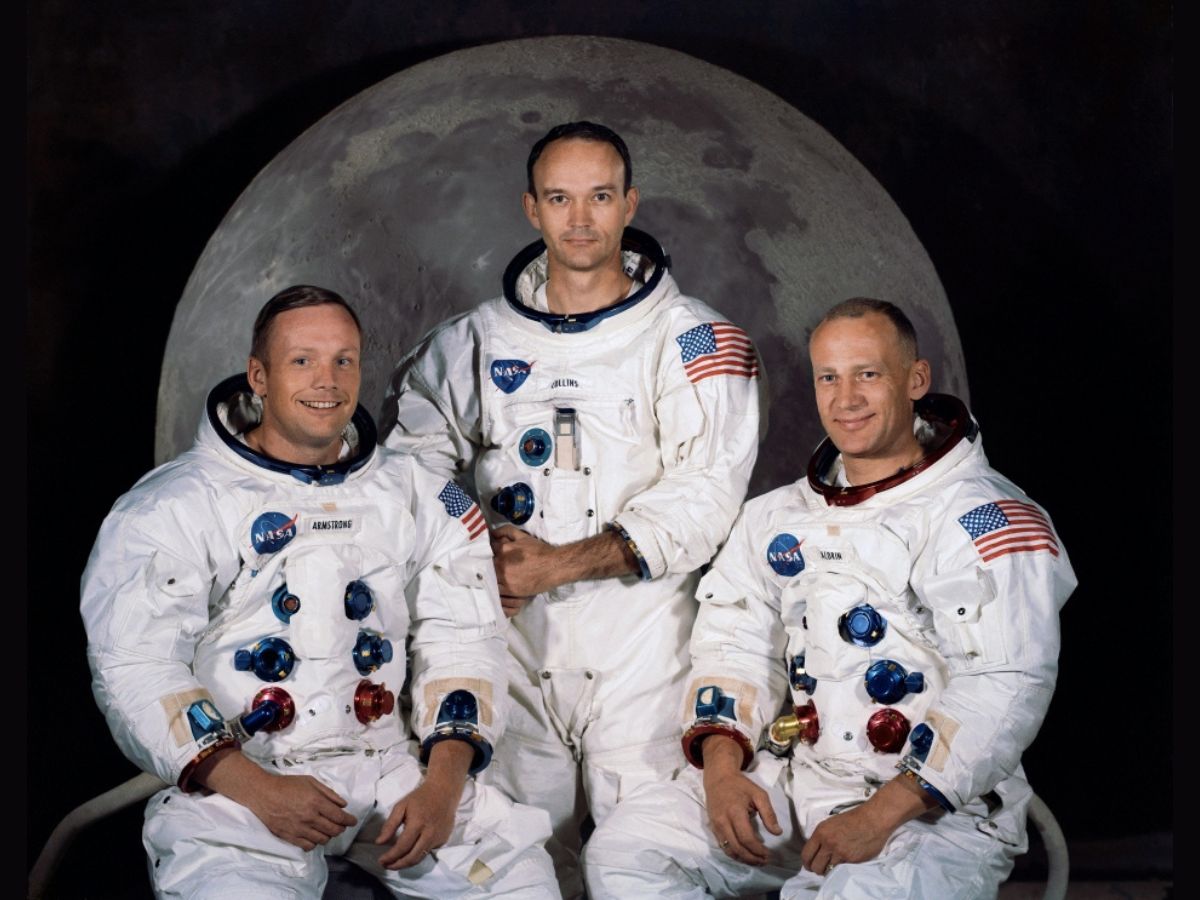
ALSO READ | What Are Dark Matter And Dark Energy? Here's What A CERN Scientist Says
Zond 7
Zond 7 was launched on August 7, 1969. Its aim was to obtain coloured photographs of the Earth and Moon from varying distances.
Apollo 12
The Apollo 12 mission launched astronauts Charles "Pete" Conrad Jr, Apan Bean, and Richard F Gordon Jr towards the Moon on November 14, 1969. The astronauts blasted off towards the Moon atop a Saturn V rocket.
Just after launch, the Apollo 12 spacecraft was struck twice by lightning. Though this temporarily knocked out electrical power, the problems did not stop a successful mission.
The goals of Apollo 12 included investigation of the lunar surface environment, and enhancement of the capability for human lunar exploration.
The Apollo 12 crew deployed an instrument package and collected more than 34 kilograms of samples, captured photographs of the lunar surface, collected samples of the solar wind, and investigated soil mechanics.

They also retrieved parts of the robotic Surveyor 3 spacecraft that had previously landed on the lunar surface.
The crew performed extravehicular activities (EVA) totalling nearly eight hours, and remained on the lunar surface for more than 31 hours.
Apollo 12 marked the first time human explorers met up with a robotic spacecraft in space, and was also the first crewed lunar mission with science as the primary objective.
ALSO READ | Oppenheimer: The Manhattan Project, And How It Developed The Atomic Bomb
Apollo 13
Apollo 13, which was supposed to land in the Fra Mauro area of the Moon, was forced to circle the Moon without landing because an explosion occurred onboard the spacecraft. The crew included astronauts John Swigert, Fred Haise, and James Lowell. While it was supposed to be the third lunar landing attempt, Apollo 13 was aborted after a service module oxygen tank ruptured. However, the crew returned safely to Earth, and NASA gained a lot of experience in rescuing the crew, because of which Apollo 13 is known as a "successful failure". The mission was launched on April 11, 1970, and returned to Earth after six days, on April 17, 1970.
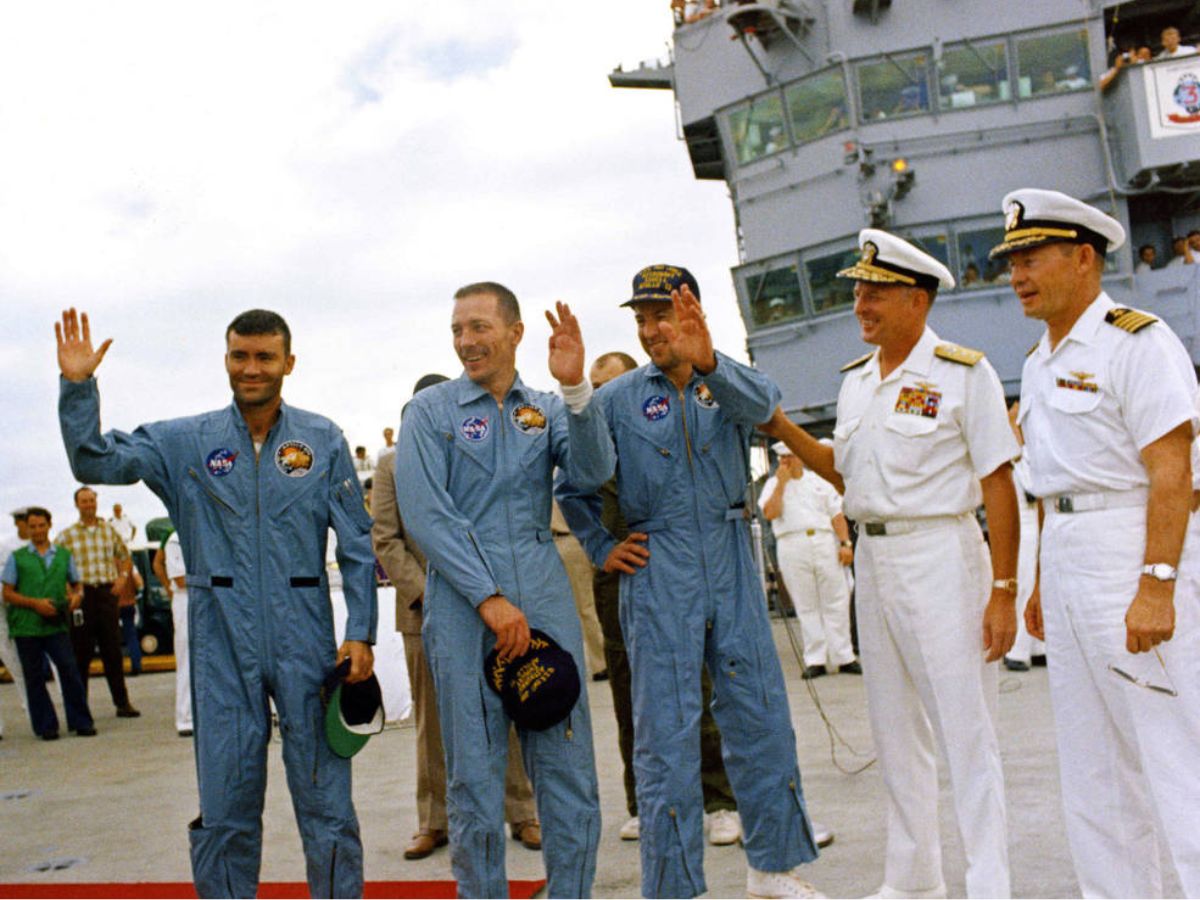
Luna 16
Launched on September 12, 1970, Luna 16 was the first robotic probe to land on the Moon, and the first to return a sample to Earth.
Zond 8
The Soviet Union launched Zond 8 on October 20, 1970. It captured pictures of Earth on October 21, 1970, and transmitted images of the planet for three days.
Luna 17
Luna 17 was launched on November 11, 1970, and entered lunar orbit on November 15, 1970. Luna 17 deployed Lunokhod 1 towards the Moon, the first robotic lunar rover to land on the Moon.
Apollo 14
Astronauts Alan B Shepard Jr, Stuart A Roosa, and Edgar D Mitchell were launched towards the Moon as part of the Apollo 14 mission on January 31, 1971.
This was the first flight to the Moon after the Apollo 13 mission was aborted.
The Apollo 14 crew carried out the longest list of experiments on the Moon and in lunar orbit as of that time. The astronauts demonstrated that reasonably long distances can be traversed on foot on the Moon.
The crew brought back almost 43 kilograms of lunar samples to Earth.
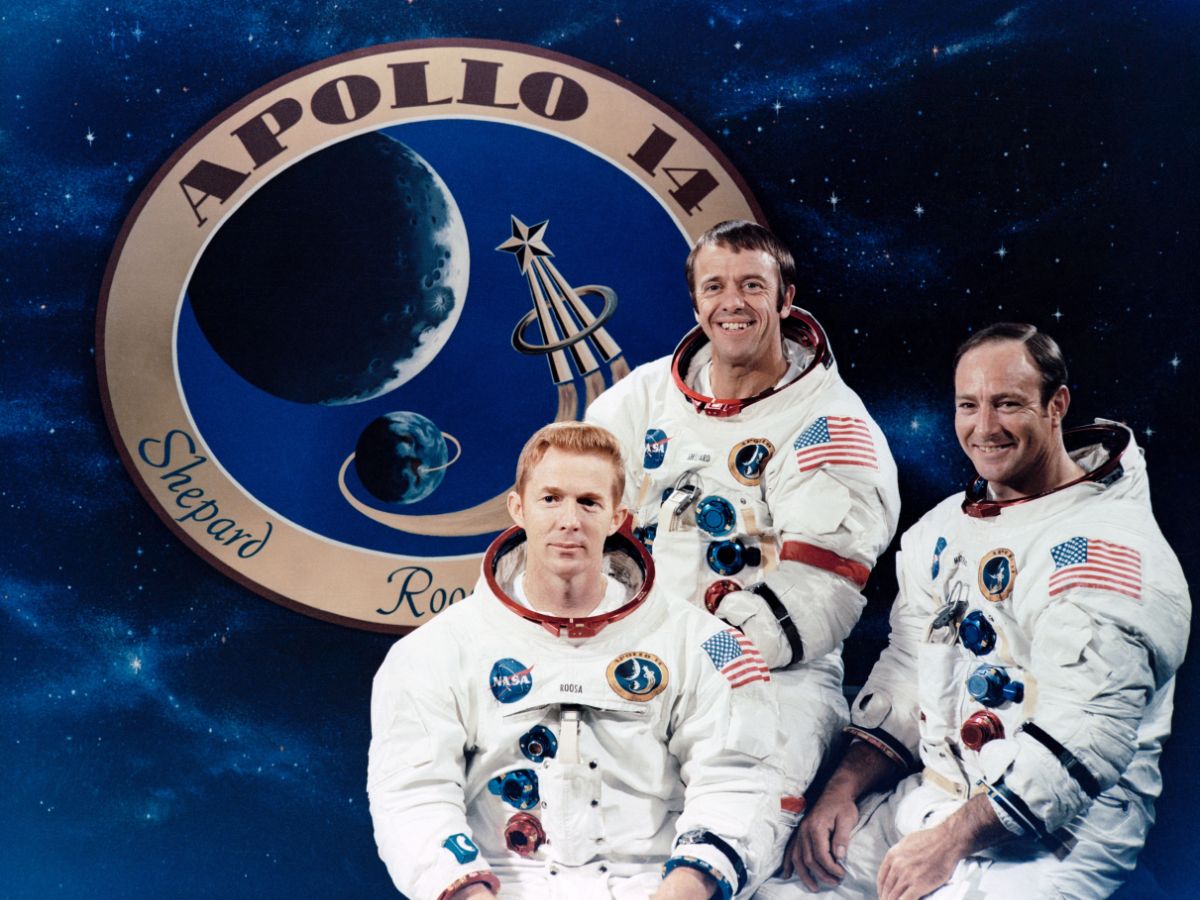
It was the third mission in which humans landed on the Moon, and was commanded by Alan B Shepard Jr, the man who became the first American in space, on May 5, 1961. He piloted the Mercury spacecraft Freedom 7 on a 490-kilometre, 15-minute suborbital flight.
Stuart A Roosa piloted the command module "Kitty Hawk". The lunar module "Antares" was piloted by Edgar D Mitchell. Apollo 14 was the first space mission for Roosa and Mitchell.
ALSO READ | Ancient Marine Predator, Once Thought To Be A Bone-Crusher, Probably Preferred Soft Prey: Study
Apollo 15
Astronauts David R Scott, James B Irwin, and Alfred M Worden were the crew members of Apollo 15, the fourth mission in which humans walked on the Moon. Apollo 15 marked the first time humans drove on the Moon.
The astronauts were launched towards the Moon on July 26, 1971.
Apollo 15 doubled the time spent on the lunar surface, compared to the previous record-holder, Apollo 14.
The goals of Apollo 15 included exploring the mountainous Hadley-Apennine region, making engineering evaluations of new Apollo equipment, activating lunar surface scientific experiments, photography, and conducting experiments related to lunar orbit.
The Apollo 15 astronauts, with the help of the first automotive vehicle designed for off-planet use, explored a more diverse region of the Moon than ever before.
PFS-1
Particles and Fields Subsatellite 1 was deployed from the Apollo 15 spacecraft in lunar orbit to study the plasma, particle and magnetic field environment of the Moon, and analyse the lunar gravity field. It was launched on July 26, 1971, by NASA.
Luna 19
Luna 19, launched on September 28, 1971, studied lunar gravitational fields and the lunar radiation environment.
ALSO READ | New Battery Uses Toothpaste Ingredient, May Power Electric Cars: Scientists
Luna 20
Luna 20, launched on February 14, 1972, soft landed on the Moon in a mountainous region known as the Apollonius highlands near the Sea of Fertility.
Apollo 16
Astronauts John W Young, Charles M Duke Jr, and Thomas K Mattingly were launched towards the Moon on April 16, 1972, as part of the Apollo 16 mission. At that time, scientists believed that lunar highlands were of volcanic origin. The findings of Apollo 16 proved these assumptions wrong.
Apollo 16 was the first crewed landing in the central lunar highlands. Astronauts made the first spacewalk during the return journey to Earth, as part of Apollo 16.
Though Apollo 16 was the fifth mission in which astronauts walked on the surface of the Moon, it was far from routine. This is because it changed the way scientists think of the Moon.
John W Young, the commander of the mission, and Charles M Duke, pilot of the lunar module "Orion", landed at the western edge of the Descartes mountains on the Moon, on April 21, 1972.
The command module "Casper" was piloted by Thomas K Mattingly, who also performed experiments in lunar orbit.
The destination for Apollo 16 was different from those for the previous Apollo missions. Three of the destinations were in mare regions, which are flat, dark plains of lower elevation on the Moon, also referred to as lunar seas.
The measurements made and samples collected by Apollo 16 astronauts disproved the hypothesis that the central lunar highlands on the lunar surface were a product of volcanic eruptions in the Moon's ancient past.
PFS-2
PFS-2 was deployed from the Apollo 16 service module in lunar orbit to study the Moon's plasma and particle environment. It was launched on April 16, 1972.
Apollo 17
Apollo 17 was the last time humans landed on the Moon. Astronauts Eugene A Cernan, Ronald E Evans, and Harrison H Schmitt were launched towards the Moon on December 7, 1972, atop a Saturn V rocket, as part of the Apollo 17 mission. The crew reached the lunar surface on December 11, 1972.
The astronauts collected the oldest known unshocked lunar rock. This suggests that the Moon had a dynamo-generated magnetic field in its past. This is a magnetic field generated by a fluid inside an astronomical object.
The crew collected samples of "orange soil" containing volcanic glass, and deployed scientific experiments.
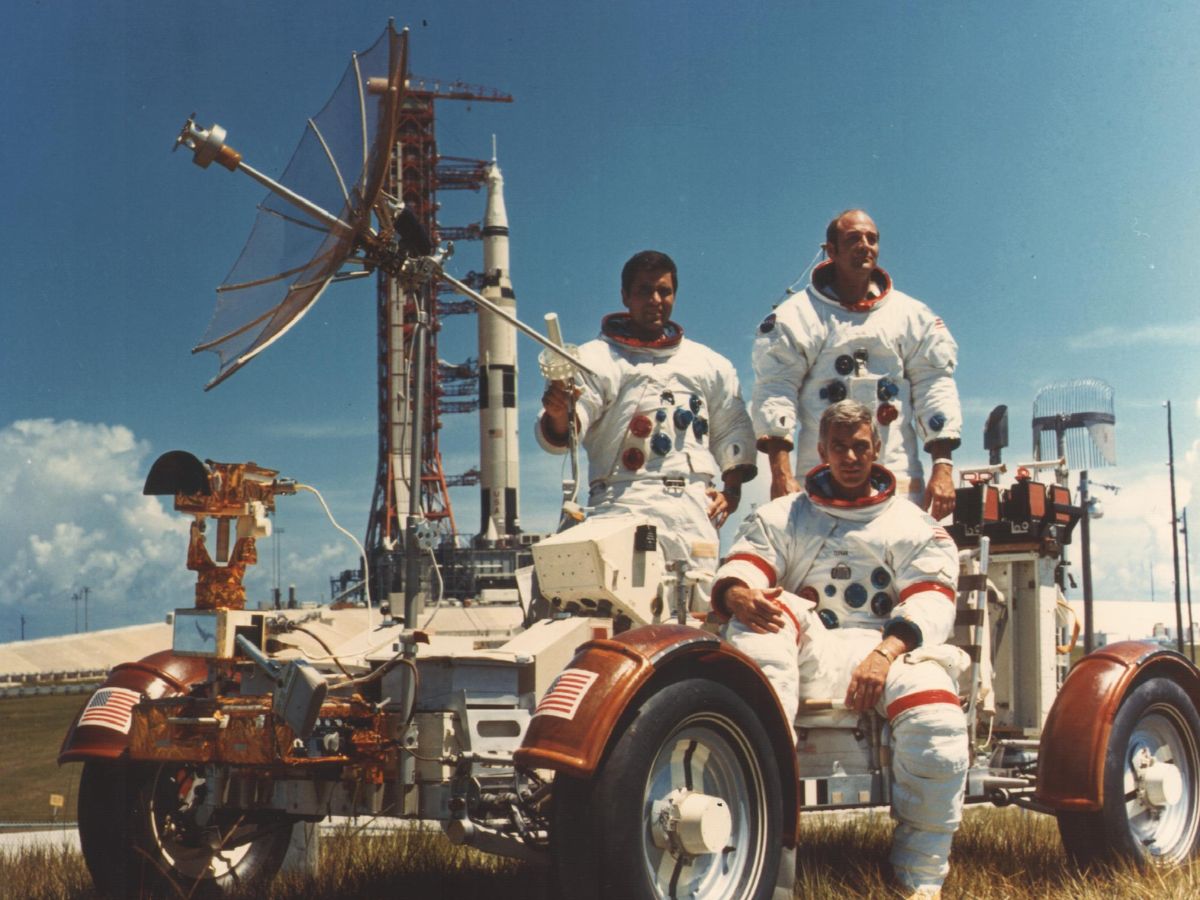
They left a plaque on the Moon which reads: "Here man completed his first exploration of the Moon, December 1972 A.D. May the spirit of peace in which he came be reflected in the lives of all mankind".
Apollo 17 was the first mission in which a scientist got the opportunity to investigate the Moon firsthand.
Harrison H Schmitt was a geologist and had been part of the backup crew for Apollo 15. He served as pilot of the lunar module, "Challenger", for Apollo 17.
The command module, "America", was piloted by Ronald E Evans. Eugene A Cernan was the commander of Apollo 17.
ALSO READ | New Ankylosaur Species Found In UK's 'Dinosaur Island'. All About The Armoured Creature
Luna 21
Luna 21, launched on January 8, 1973, deployed the second Soviet lunar rover on the Moon. The rover was called Lunokhod 2.
Explorer 49
NASA launched Explorer 49 on June 10, 1973. It was the final US mission to the Moon for 21 years, and studied low-frequency radio emissions from the solar system and beyond.
ALSO READ | For A Billion Years In The Past, Earth Had 19-Hour Days, Study Suggests
Mariner 10
NASA launched Mariner 10 on November 3, 1973. The first spacecraft sent to study Mercury, Mariner 10 also studied Venus. The spacecraft used the Moon for gravity assist.
Luna 22
Luna 22 was launched on May 29, 1974, with the aim of studying surface gamma ray emissions around the Moon, and the composition of lunar surface rocks.
ALSO READ | Explained: How Tropical Cyclones Are Named, And The Science Behind Their Formation
Luna 24
Luna 24, launched on August 9, 1976, was the third Soviet mission to obtain lunar ground samples, and the final mission to the Moon from the Soviet Union.
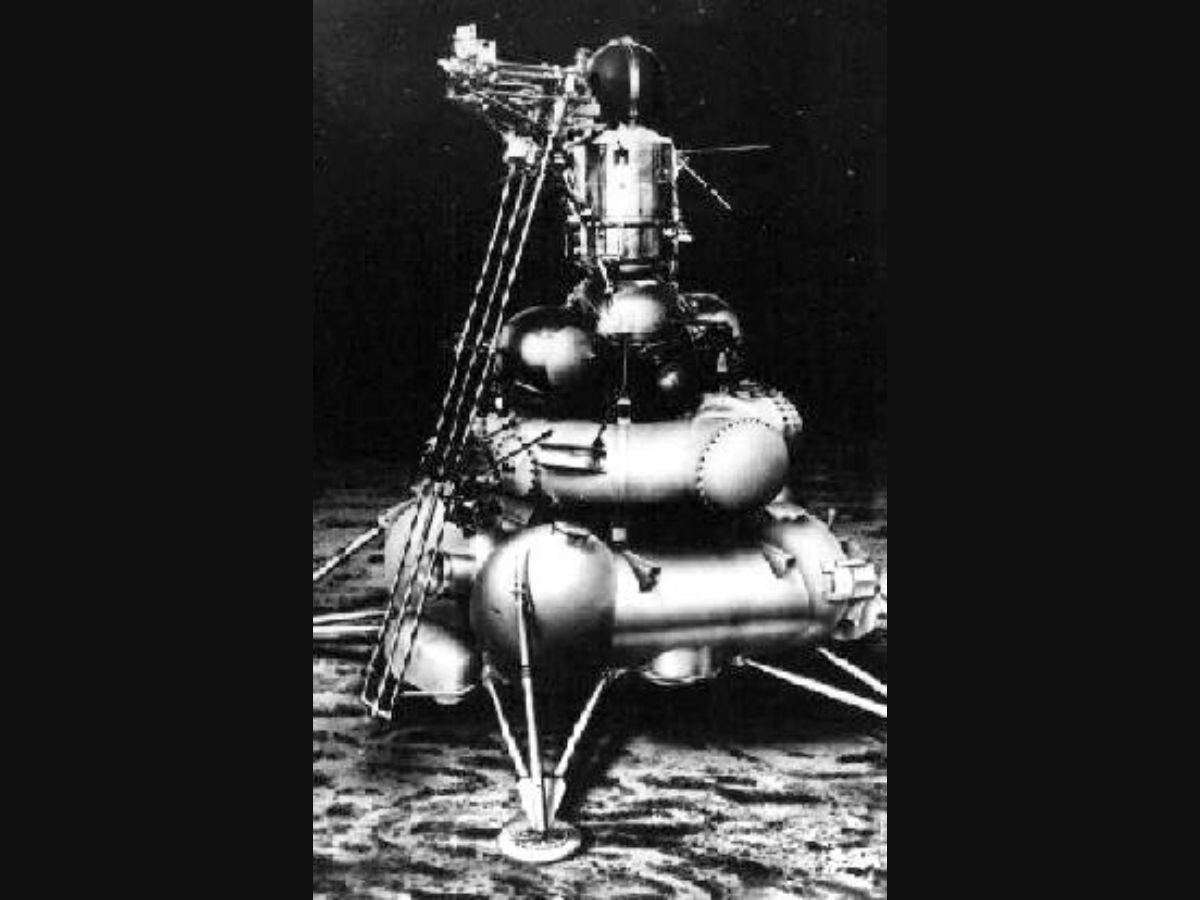
ISEE-3/ICE
The International Sun-Earth Explorer-3 (ISEE-3) was launched by NASA on August 12, 1978. It conducted the first deep survey of Earth's magnetic tail, followed by a series of complex flybys of the Moon. After this, the spacecraft was renamed the International Cometary Explorer (ICE) because it became the first spacecraft to fly past a comet. ICE passed by a comet called Giacobini-Zinner. ICE flew past the Moon for gravity assist.
There were theories that comets are "dirty snowballs", and the spacecraft's observations supported this theory.
ALSO READ | Explained: What Are Virgin Births? A Type Of Asexual Reproduction In Sexually Reproducing Species
Hiten
The Institute of Space and Astronautical Science launched Hiten on January 24, 1990. It was Japan's Earth-orbiting satellite designed to test and verify technologies for future lunar and planetary missions. It intentionally crashed on the Moon on April 10, 1993, making Japan the third country to reach the Moon.
Geotail
Geotail was launched by the Institute of Space and Astronautical Science (ISAS) and NASA on July 24, 1992. The spacecraft provided information about why Earth's magnetosphere responds to incoming material and energy from the Sun. Geotail used the Moon for gravity assist.
WIND
WIND was launched on November 1, 1994, by NASA, and investigated basic plasma processes occurring in the near-Earth solar wind. The spacecraft used the Moon for gravity assist.
Clementine
NASA launched Clementine on January 25, 1994. Designed to test spacecraft components during extended exposure to space and to study the Moon, Clementine was the first US spacecraft launched to the Moon in over two decades.
ALSO READ | Robot Chef Prepares Dishes After Learning From Videos. WATCH
HGS-1
The HGS-1 communications satellite was launched by Hughes Aircraft Company on December 24, 1997. It orbited the Moon twice to reposition itself into a useful orbit.
Lunar Prospector
NASA launched Lunar Prospector on January 7, 1998. The spacecraft orbited the Moon for about 19 months to search for polar ice, and found evidence suggesting water ice at both poles.
ALSO READ | Science For Everyone: How The Periodic Table Arranges The Elements, And Its Significance
Nozomi
The Institute of Space and Astronautical Science (ISAS) launched Nozomi on July 3, 1998. Japan's first interplanetary spacecraft and the first mission sent to Mars by a country other than the US or the Soviet Union, Nozomi provided important information about the deep space environment of the Red Planet. Nozomi flew past the Moon for gravity assist.
WMAP
The Wilkinson Microwave Anisotropy Probe (WMAP) was launched in June 2001 to study the properties of the universe as a whole, and create precise full-sky maps of the cosmic microwave background. The spacecraft flew past the Moon.
SMART-1
The European Space Agency (ESA) launched SMART-1 on September 27, 2003. It was the ESA's first Moon mission, and studied chemical components on the lunar surface.
STEREO A and B
NASA launched STEREO A and B on October 25, 2006, to study the structure and evolution of solar storms as they emerge from the Sun, and provided the first three-dimensional vire of the Sun's surface. They used the Moon gravity assist.
ALSO READ | Are Mental Health Disorders More Prevalent In Women Than In Men? Experts Say It Is Not So Simple
ARTEMIS P1 and P2
NASA's Acceleration, Reconnection, Turbulence and Electrodynamics of the Moon's Interaction with the Sun (ARTEMIS) mission launched two probes: ARTEMIS P1 and P2, on February 17, 2007. While they were originally part of NASA's THEMIS mission that orbited Earth and studied auroras, they were redirected to the Moon, and arrived in lunar orbit in 2011.
Kaguya (Selene)
Kaguya (Selene) was launched by the Japanese Aerospace Exploration Agency (JAXA) on September 14, 2007, from the Tanegashima Space Center. Its main objectives were to understand the evolution of the Moon, and to develop the technology for future lunar exploration.
ALSO READ | The Science Of Health: Which Diseases Are Women More Prone To Than Men? Here's What Experts Say
Chang'e 1
The Chinese National Space Administration launched Chang'e 1 on October 24, 2007. This spacecraft was the first of a series of Chinese missions to the Moon, and its primary objectives were to develop and launch China's first lunar orbiter, gain experience for subsequent lunar missions build a basic engineering system for lunar exploration, validate the technology necessary to fly lunar missions, and start scientific exploration of the Moon.
Chandrayaan-1
Chandrayaan-1, India's first mission to the Moon, was launched successfully on October 22, 2008, from Satish Dhawan Space Centre, Sriharikota, Andhra Pradesh. The spacecraft orbited the Moon at a height of 100 kilometres from the lunar surface for chemical, mineralogical, and photo-geologic mapping of Earth's satellite. It mapped the Moon in various wavelengths from lunar orbit. The spacecraft played an important role in the discovery of water molecules on the Moon.
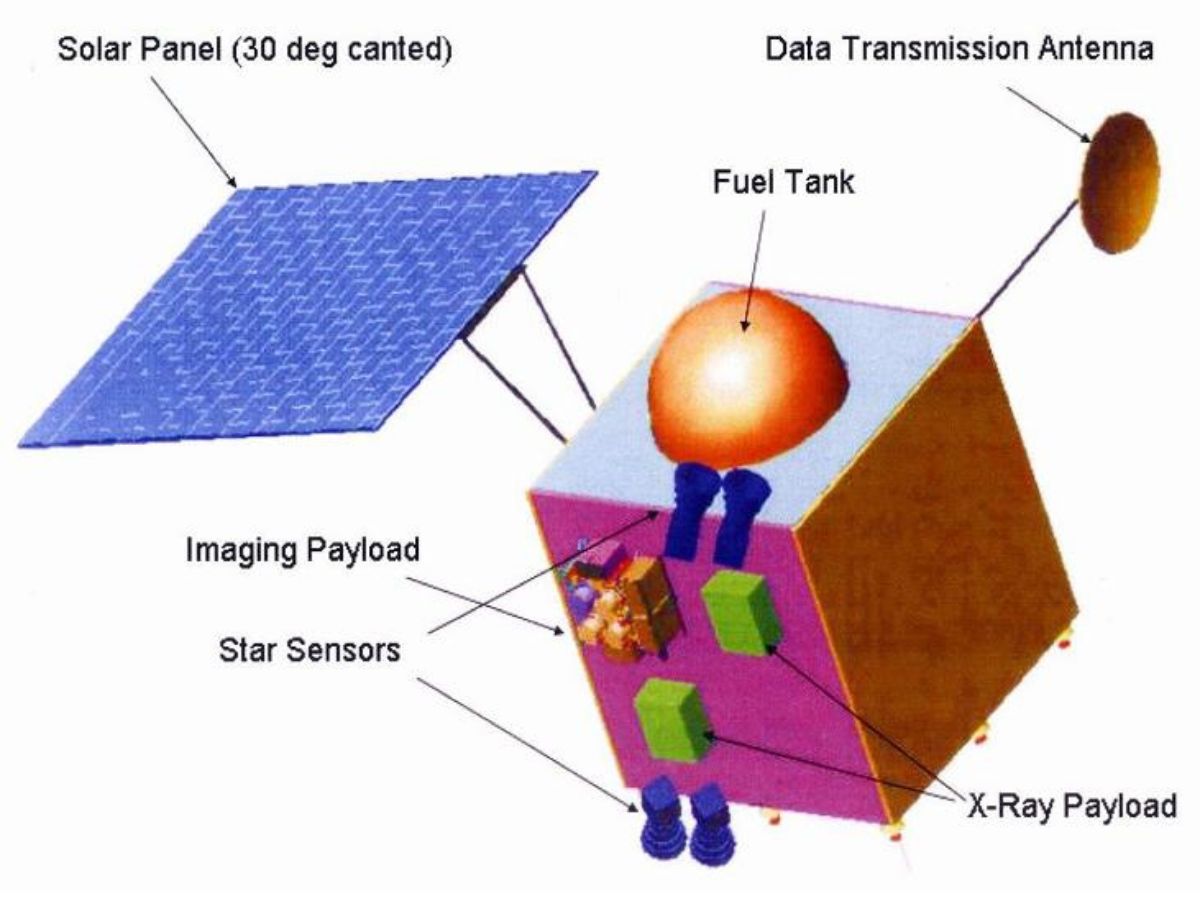
ALSO READ | Science For Everyone: Why Colonising Mars Is Still Far From Reality
Lunar Reconnaissance Orbiter
NASA launched the Lunar Reconnaissance Orbiter on June 18, 2009. It was the first US lunar mission in over a decade, and its primary objective was to obtain a three-dimensional map of the surface of the Moon from lunar polar orbit. The LRO is still operational.
LCROSS
NASA launched the Lunar Crater Observation and Sensing Satellite (LCROSS) mission with the LRO to determine if water-ice exists in a permanently shadowed crater at the Moon's south pole. Both the spacecraft, launched on June 18, 2009, found that the Moon is chemically active, and has a water cycle, and that the lunar soil in shadowy craters is rich in useful materials.
ALSO READ | Two-Thirds Of Alzheimer's Disease Patients Are Women. Experts Explain Why Females Are More Vulnerable
Chang’e 2
China launched Chang'e 2 on October 1, 2010, to serve as a technical test satellite for future Chinese lunar missions, and to return high resolution images of the lunar surface.
GRAIL
NASA launched two spacecraft — Ebb and Flow — as part of its GRAIL mission on September 10, 2011, to analyse variations in the lunar gravitational field.
LADEE
NASA launched LADEE, a robotic mission, on September 7, 2013. It orbited the Moon to contain information about the lunar atmosphere, conditions near the lunar surface, and how the lunar environment impacts the lunar dust.
Chang'e 3
The Chinese National Space Agency launched Chang'e 3 on December 2, 2013. It was China's first spacecraft to softly land on the Moon.
Chang'e 3's lander is still operational.
ALSO READ | World Schizophrenia Day: Schizophrenia Is Beyond Hallucinations And Delusions. Know Its Unusual Symptoms
Chang'e 5-T1
China launched the Chang'e 5-T1 mission on October 23, 2014, as a test of the strategy planned for Chang'e 5. The Chang'e 5-T1 spacecraft consisted of a bus and a sample return capsule, and was launched to orbit the Moon and made to return to Earth.
Manfred Memorial Moon Mission
The Manfred Memorial Moon Mission was launched by LuxSpace on October 23, 2014. It is the first privately funded lunar flyby mission.
TESS
NASA launched the Transiting Exoplanet Survey Satellite (TESS) mission on April 18, 2018, to discover exoplanets orbiting the brightest dwarf stars in the sky. TESS has identified almost 6,000 exoplanet candidates. On May 17, 2018, it performed a lunar flyby.
Queqiao
Queqiao, launched by China on May 21, 2018, was designed as a communications relay satellite for the Chang'e 4 spacecraft. It is still operational.
ALSO READ | World Preeclampsia Day: How The Hypertensive Disease Affects Foetuses And Newborn Babies
Longjiang
China launched Longjiang-1 and Longjiang-2 on May 21, 2018, on Long March 4C, the same rocket as Queqiao. However, Longjiang-1 never entered lunar orbit. Longjiang-2 entered lunar orbit on May 25, 2018, and impacted the Moon after two months.
Chang'e 4
China launched Chang'e 4 on December 7, 2018. This is the spacecraft to softly land on the far side of the Moon. The lander and the rover are still operational.
ALSO READ | World Preeclampsia Day: Biomarkers, Antioxidants – Science Advances That Can Lead To A Cure For Preeclampsia
Chandrayaan-2
Chandrayaan-2 is the second lunar exploration mission developed by ISRO. The spacecraft consisted of a lunar orbiter, the Vikram lander, and the Pragyan lunar rover. It was launched on July 22, 2019.
However, the lander crashed when it deviated from its intended trajectory while attempting to land on the Moon on September 6, 2019.

ALSO READ | The Science Of Health: What Is Preeclampsia, Why It Occurs, And How Pregnant Women Can Prevent It
Chang'e 5
Launched on November 23, 2020, Chang'e consists of four parts: an orbiter, a lander, an ascender and a returner. It is China's first automated Moon surface sampling probe, and the country's first to return lunar samples. The orbiter is still operational.
CAPSTONE
NASA's Cislunar Autonomous Positioning System Technology Operations and Navigation Experiment (CAPSTONE) is a microwave oven-sized CubeSat, and the first spacecraft to test a unique, elliptical lunar orbit, which is a significantly elongated orbit, and is located at a precise balance point in the gravities of the Earth and the Moon, offering stability for long-term missions such as Gateway. Gateway is a Moon-orbiting outpost that is part of NASA's Artemis program, and by acting as a pathfinder for Gateway, CAPSTONE will validate innovative navigation technologies, and help reduce risk for future spacecraft. NASA launched CAPSTONE on June 28, 2022. CAPSTONE arrived in lunar orbit on November 14, 2022. The spacecraft is still operational.
ALSO READ | World Hypertension Day: In Which Cases Is Hypertension Curable? Here's What Experts Say
Danuri
South Korea launched its first lunar orbiter on August 5, 2022, marking the first step towards ensuring the East Asian country's capability of space exploration.
The Korean Pathfinder Lunar Orbiter (KPLO), nicknamed 'Danuri', is South Korea's first Moon mission. The lunar orbiter was launched atop a SpaceX Falcon 9 rocket from Space Launch Complex 40, Cape Canaveral, Florida.

Danuri, meaning "enjoy the Moon", is developed and managed by the Korea Aerospace Research Institute (KARI). The lunar orbiter has been orbiting the Moon for over a year. I carried an array of South Korean experiments and an instrument built by the US.
Artemis I
NASA's Artemis I was launched on November 16, 2022. It is the first uncrewed flight of the Artemis Moon Program, and the first integrated test of NASA's deep space exploration systems. The Orion spacecraft, the Space Launch System (SLS) rocket, and the ground systems at NASA's Kennedy Space Center in Florida are the US space agency's deep space exploration systems.
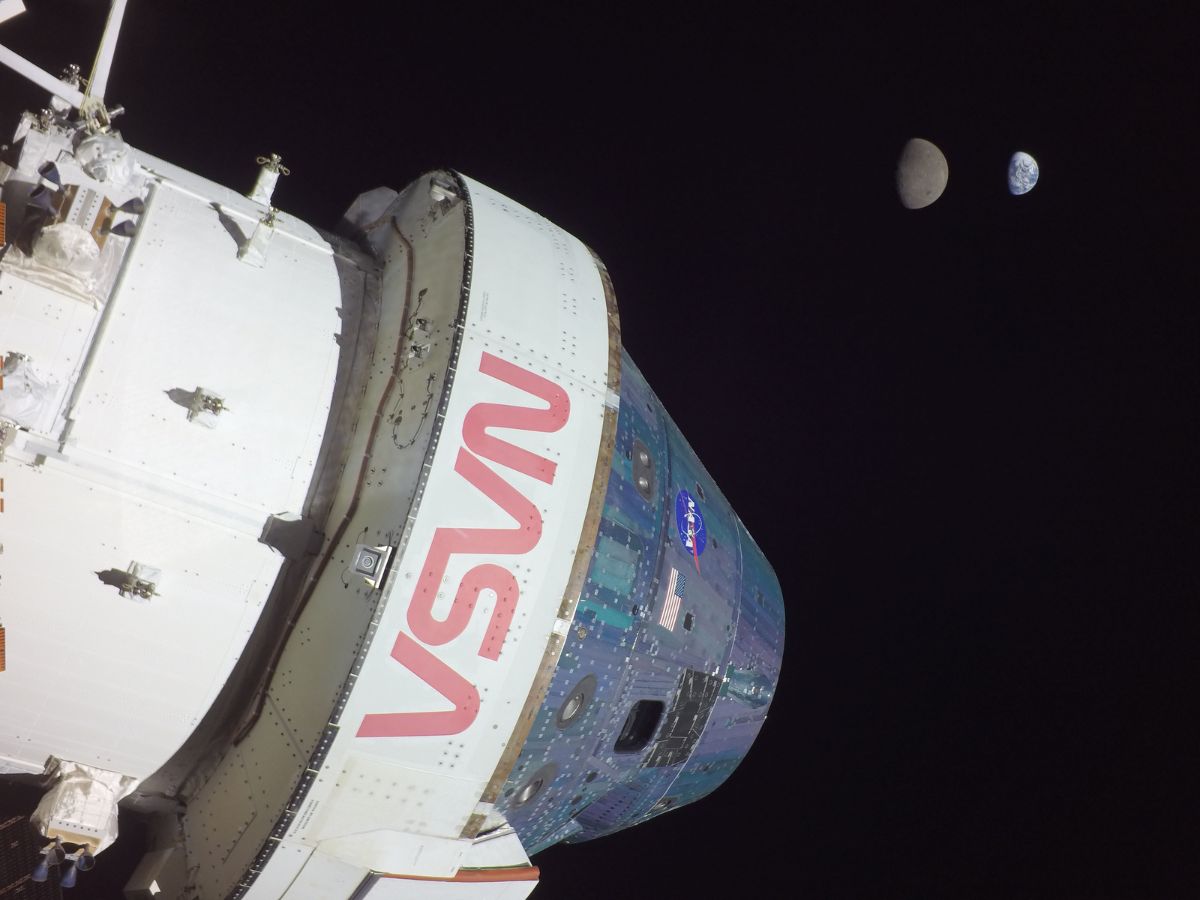
ALSO READ | Artemis I: NASA's Orion Returns To Earth. Know What's Next
The Orion spacecraft returned to Earth on December 12, 2022, after spending over 25 days in the harsh environment of deep space. Orion splashed down in the Pacific Ocean, after circling a path of more than 2.25 million kilometres around the Moon.
The aim of Artemis I was to test Orion in the harsh environment of deep space before flying astronauts on Artemis II.
Chandrayaan-3
Chandrayaan-3, India's third lunar exploration mission, was successfully launched on July 14, 2023. About 40 days after launch, Chandrayaan-3 successfully soft-landed on the Moon's south pole on August 23, 2023, at 6:02 pm IST, making India the first country to softly land a spacecraft on the lunar south pole.
The Pragyan rover successfully rolled out of the Vikram lander over four hours after the historic touchdown. Chandrayaan-3 has shared images captured during lunar descent, and pictures of the landing site, with Earth.

ALSO READ | India On The Moon: Chandrayaan-3 Makes Historic Soft-Landing On Lunar South Pole
According to ISRO, the rover rolled out of the lander with the help of a two-segment ramp, and used the power generated by a solar panel.
All of Chandrayaan-3's activities are on schedule, and all systems are normal. Three of the lander's payloads — Chandra's Surface Thermophysical Experiment (ChaSTE), Instrument for Lunar Seismic Activity (ILSA), and Radio Anatomy of Moon Bound Hypersensitive ionosphere and Atmosphere (RAMBHA) — have been turned on. Both the payloads of the rover — Alpha Particle X-ray Spectrometer (APXS) and Laser Induced Breakdown Spectroscope (LIBS) — have also been turned on. The rover mobility operations have commenced.
On August 26, Prime Minister Narendra Modi declared August 23 as National Space Day. He has named the landing site of Chandrayaan-3 as 'Shiv Shakti Point'.
Chandrayaan-3 has accomplished two of its mission objectives: demonstration of safe and soft landing on the lunar surface, and demonstration of roving the Moon.
Both Vikram and Pragyan's rovers are performing normally, and in-situ scientific experiments are being conducted. Therefore, the third objective is expected to be achieved about 14 days from touchdown.


























